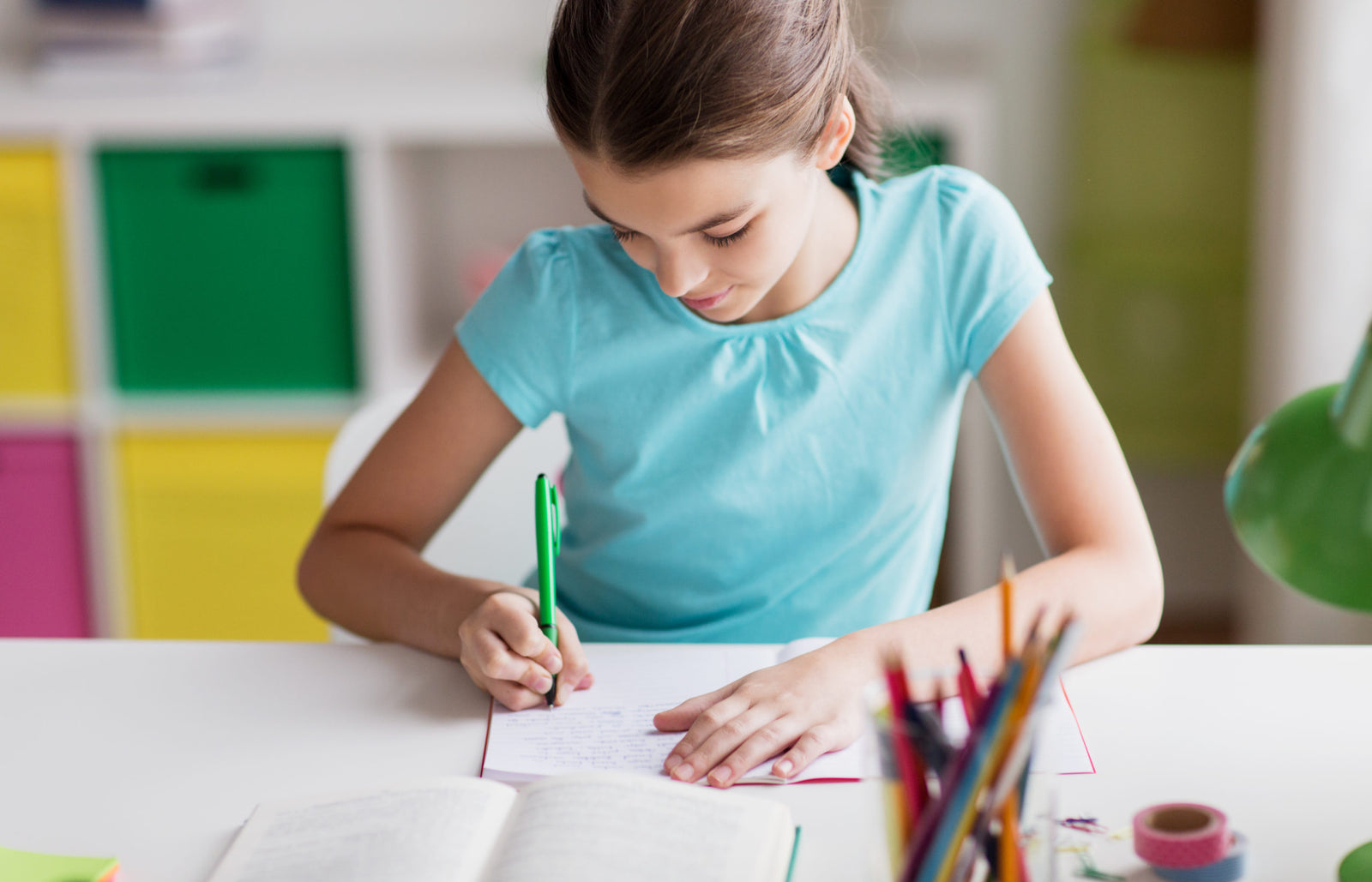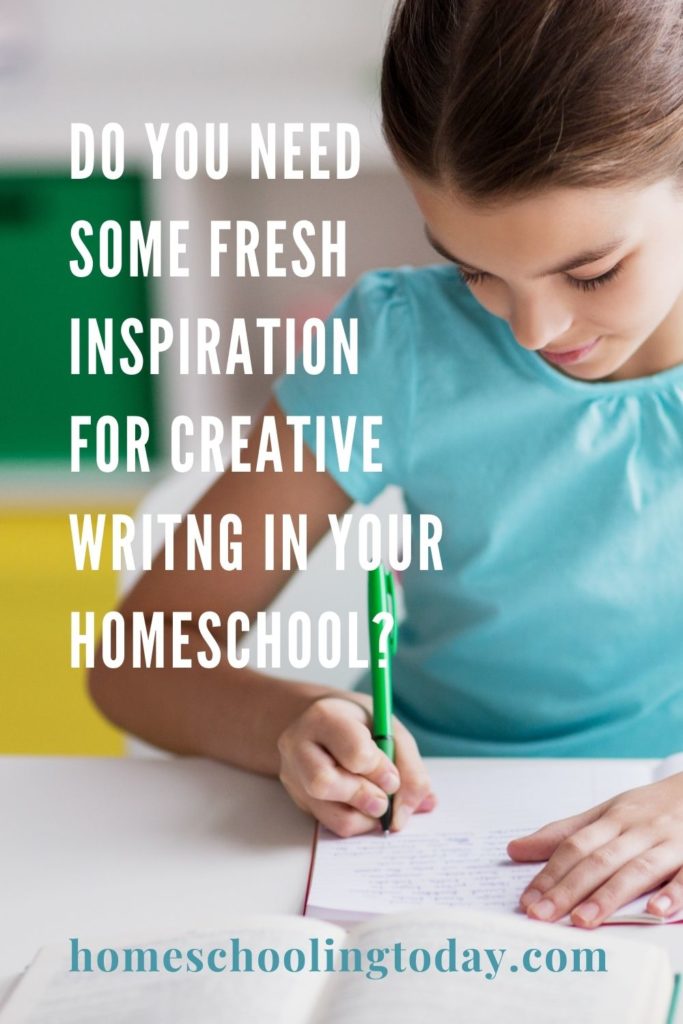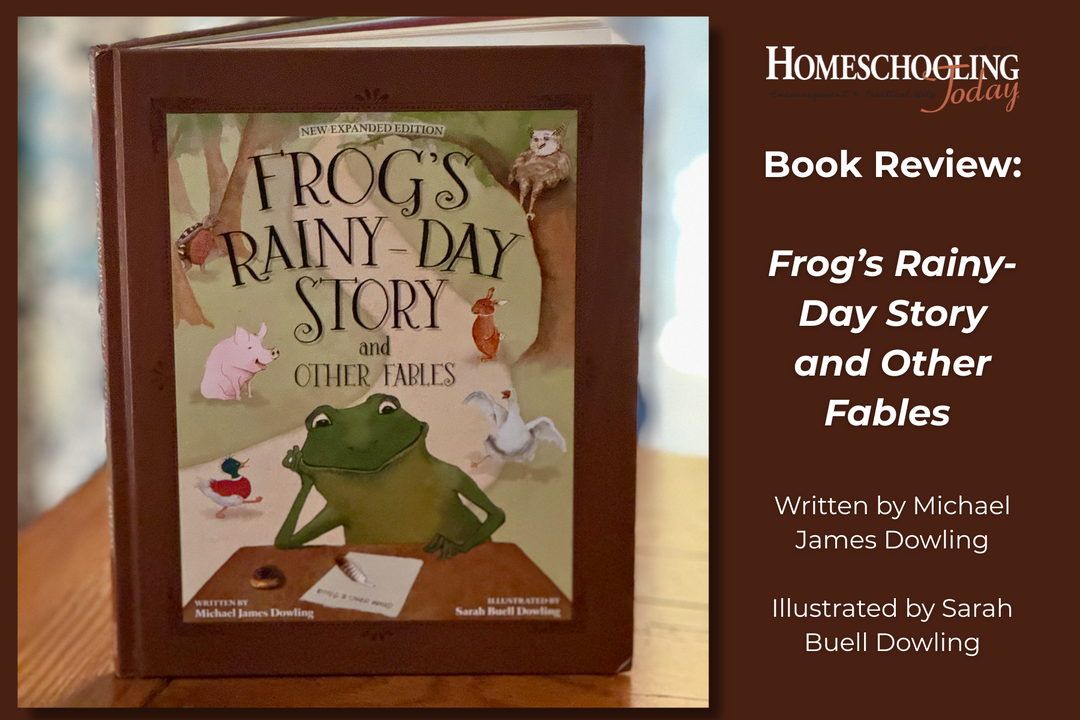3 Creative Writing Activities Inspired by Children's Stories and Poems

Creative writing doesn't have to be overwhelming, and it doesn't mean students aren't doing "real" writing, even in the upper grades. Creative writing exercises our minds and helps us think outside-of-the-box. Use children's stories, poems, and fables to inspire your kids!
When we homeschooled, we had a small co-op that met every Friday. One year we had our kids rewrite The Three Little Pigs using a different setting and it was so much fun! We even compiled their stories into a "book" and I still love looking back at it.
I like to refer to this type of assignment as inspired writing. With inspired writing, children and teens get to use a familiar story or book to act as a spring board for their own writing. You can closely tie it to a read-aloud or a book they've read no matter what their age. Often all you have to do is adapt an idea a bit and use it for multiple students.

Creative Writing Assignments Inspired by Children's Literature
The following ideas can be adapted to whatever you have, but I recommend the book, A Treasury of Children's Literature. It's full of traditional stories, Aesop's fables, fairy tales, nursery rhymes, children's classics, poetry, and tall tales. It also has beautiful illustrations!
Change the Setting of a Story
Setting is the time and place a story a story takes place. Growing up, I learned about setting in school like most people, but I don't think I ever really considered why it was so important to understand. This is one of the reasons we love a natural approach to teaching language arts: Children learn to language arts skills in the context of real writing.
This writing activity helps students consider the impact of setting on a story.
Choose a familiar story or fairy tale and read it aloud to your kids (even your teens can join in). Here are a few favorites included in A Treasury of Children's Literature that work well for this activity:
- Goldilocks and the Three Bears
- The Three Little Pigs
- Little Red Riding Hood
- Cinderella
Have students choose one of the children's stories listed above and consider what would change about the story if it were set in a different time or place or even both. Talk about it with them, and ask questions like,
- Pretend the three bears in Goldilocks and the Three Bears lived in our house. What might Goldilocks find in the kitchen to eat instead of porridge? What furniture would she possibly try to sit on? Whose bed do you think is the most comfortable one?
- What would it be like if The Three Little Pigs happened in colonial America? What might they make their houses of? What do you think their names would be?
- What if Little Red Riding Hood lived in the city we live in today? How would that affect her walk to grandma's house? What might she bring in her basket to visit her grandmother?
- What if Cinderella lived in ______________ (a country you've been studying)? How would that change her story? (Teaching Tip: Many countries and cultures have their own Cinderella stories. Go to the library and check some of them out so kids can see the differences.)
These are simply ideas to help them start to think. Let your students choose their own setting for one of the stories and rewrite either a scene from that story or the entire tale. Encourage your kids to take their time and adapt the story to fit the new setting.
Write a Poem Based on a Character or Event in a Children's Story
You'll want to begin this assignment by reading a variety of poems with your kids to help them get a feel for the difference between poetry and prose. Talk about how poems use literary language like similes, metaphors, and imagery to help paint a picture for the reader.
Next, let them pick a children's story, fairy tale, folk tale, or fable to base their poem on. Have them read it multiple times. If they are going to have their poems rhyme, help them brainstorm some words they may want to use and list words that rhyme with them.
Poetry4Kids has a variety of ideas for teaching kids how to write poetry. The pattern poems are a great place to start for this activity.
Rewrite a Fable with a Different Moral
Once again, begin by reading multiple fables. Talk about how these short stories were written to teach a lesson to children and often end with that lesson (or moral).
What happens when the moral at the end of a fable is the complete opposite of the original? How could the fable be changed to reflect this new lesson—one that's not necessarily a good one?
At the end of The Ant and the Grasshopper it says, "One must always prepare today for the needs of tomorrow." How would the story change if instead the lesson was, "Don't worry about preparing for the needs of tomorrow"? Of course this is bad advice, but exploring a short story that "proves" it will make kids think about how ridiculous it is.

Creative Writing for Kids
Children's stories and poems make the perfect inspiration for creative writing. Encourage your kids to come up with their own ideas.
Need more help with writing and language arts? Check out some of our other posts:
Kay Chance homeschooled her two boys for fifteen years. While teaching them, she discovered a passion for writing and developing curriculum resources. She loves sharing natural learning methods and creative lesson ideas with other homeschooling parents in her column Learning Naturally.
Kay is the co-executive editor of Homeschooling Today magazine, author of the older extensions for the Trail Guide to Learning series, and a freelance writer and content creator. She makes her home in Texas with her husband Brian.











